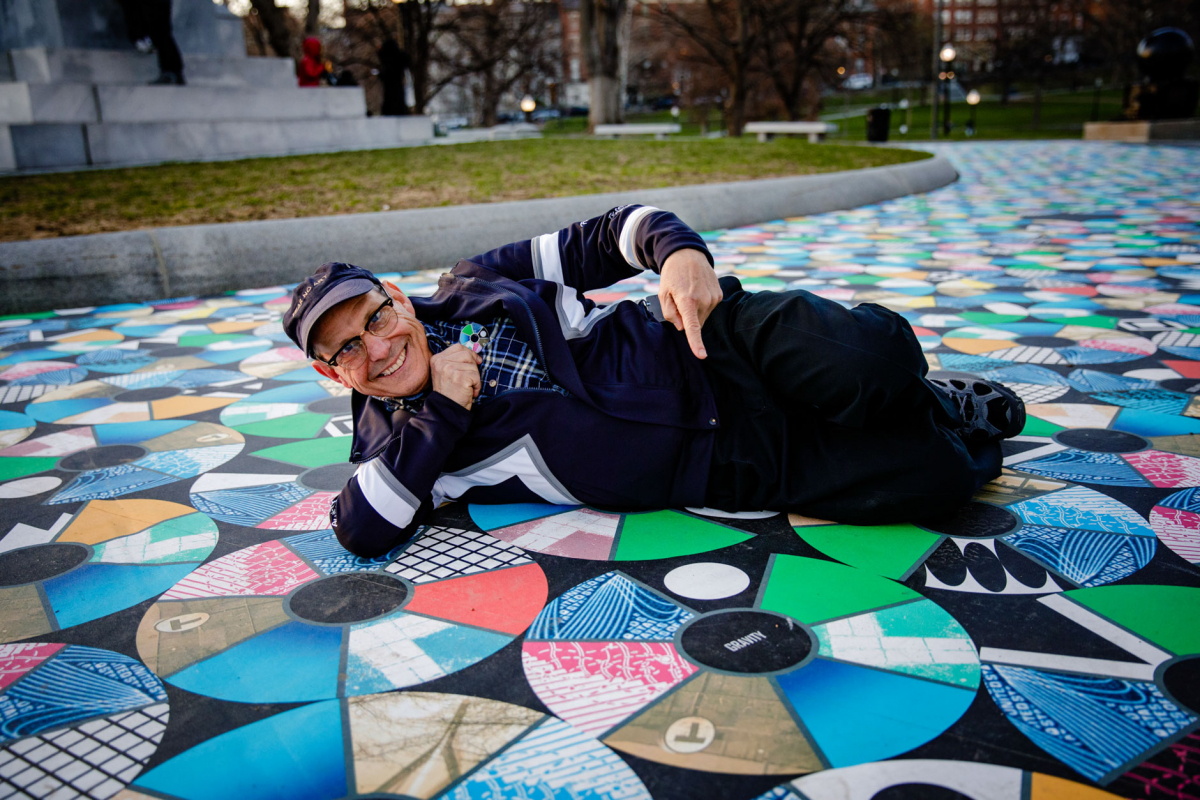Pathways to Freedom: We Put the ‘Public’ Back in Public Art
Posted by Aug 15, 2019

Mrs. Laura Conrad Mandel
The Jewish Arts Collaborative was new to public art when we commissioned Julia Vogl to create Pathways to Freedom in 2018. Our priority was to take the Passover Exodus story and make a universal story of freedom, exile, and immigration—relevant to all in the Greater Boston community in a major way. It was a bigger undertaking than our staff of five really understood, but we knew that Julia’s commitment to digging into individual stories and beautifully featuring them was just what was needed in our community.
Pathways to Freedom exceeded all expectations because we trusted Julia and her process, and because we as an organization gave her the staff, leadership, and community support she needed. Our community partners and audience trusted us to participate in the creation of the project and helped create an impressive footprint.
We took a leap of faith on a project of this size and cost—and this is what we learned.
“Putting the ‘public’ back in public art” is really powerful.
Working with our team, Julia designed the project start to finish to be accessible to everyone. From inception, the four questions that anchored the project (rooted in the four questions asked at a Passover Seder) were crafted to speak to people of all ages and backgrounds. We didn’t ask people to come to us—we physically brought the project to them: Julia brought a cart to 27 different locations across the Greater Boston area, ranging from Boston City Hall to an inner-city neighborhood center, from UMass Boston to the Peabody Essex Museum in Salem. We charged nothing to participate, met with community cultural organizations at the beginning of the process, translated the four questions into seven languages, and made the installation accessible for people with visual impairments. In addition to taking part in the project by making a colorful button, the recording of audio stories (listen here) gave space for people to talk about what freedom means in their daily lives. Those who participated took pride in the project—many visiting the site with friends and family to find their own button or story. The community response was so enthusiastic that the city extended the piece for an additional ten days.

Through this, we literally laughed and cried together as a community and we united disparate neighborhoods, both throughout the process and the final piece. Pathways was created by putting the public into the art.
The past is relevant—and art has the power to highlight this.
As Julie Burros, Chief of the Boston Arts and Culture office, said, “Pathways is the essence of making the past relevant with regards to immigration, and brings an incredible vibrancy and contemporary interest to a historic monument.” The installation brought new people and perspectives to a static, often overlooked Civil War monument, just as the Passover Seder annually offers new insights on the Israelites’ journey out of Egypt. Oral stories of recent immigrants, DACA “dreamer” students, and life-long Bostonians added a moving personal layer to the 1,800 patterns that comprised the installation. The piece shed light on the past and inspired a much-needed conversation in the present, across Boston communities.
Art is about trust.
Pathways to Freedom exceeded all expectations because we trusted Julia and her process, and because we as an organization gave her the staff, leadership, and community support she needed. Our community partners and audience trusted us to participate in the creation of the project and helped create an impressive footprint.
While the visual piece was temporary, the audio lives on online; you can listen here. You also can watch a video overview of the piece on our Facebook page.
As we plan ahead and think about what Boston’s community may look like in the future, we will be sure to utilize the strength of our community’s history and our ability to create dialogue.
This post is part of The “Public” In Public Art: Community Engagement Stories From The 2019 PAN Year In Review blog salon.





